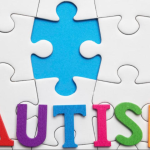Applied Behavior Analysis (ABA) is an effective strategy for managing behaviors in children, especially in reducing aggression. ABA activities focus on understanding and modifying behaviors through a thorough analysis of situations and factors that influence behavior. Through techniques such as positive reinforcement and social skills training, tangible improvements can be made in children’s behavior, contributing to a safer and more cooperative environment. This article will explore how ABA is used to reduce aggression in children in detail.
Applied Behavior Analysis (ABA)
ABA is a therapeutic approach based on principles of behavior science aimed at improving and modifying undesirable behaviors while enhancing positive behaviors. This method is one of the most effective interventions for treating children with various behavioral disorders, including autism. Among the behaviors focused on in ABA is aggression in children. ABA activities include five key elements that we will discuss in the following sections:

1- Concept of Applied Behavior Analysis (ABA):
ABA is based on the principle that behaviors can be changed by controlling and analyzing surrounding environmental factors. This involves identifying targeted behaviors (behaviors to be changed or reinforced), determining the factors that lead to these behaviors, and applying specific strategies to modify those behaviors.
2- Aggressive Behavior in Children:
Aggressive behavior may include hitting others, biting, yelling, or other hostile actions. These behaviors may result from a variety of factors such as frustration, communication difficulties, or specific environmental influences. In some cases, aggressive behavior may be a way for the child to express needs or desires when they lack appropriate communication methods.

3- Applying ABA to Reduce Aggression:
Applying ABA is an effective tool in reducing aggression in children. This approach involves understanding children’s behaviors through a comprehensive analysis of the triggers and responses surrounding them. By using ABA techniques such as positive reinforcement and behavior redirection, desirable behaviors can be reinforced, and aggressive actions minimized. These strategies help improve social interaction and enhance the psychological and physical well-being of children. This is achieved through several steps:
1- Behavior Assessment:
The ABC (Antecedent, Behavior, Consequence) analysis is used to assess aggressive behavior by identifying the triggers (Antecedents), the behavior itself (Behavior), and the consequences (Consequences). For example, a child may display aggressive behavior when they do not get a certain toy, with the goal of obtaining that toy.
2- Intervention Plan:
Based on the assessment, an intervention plan is developed that includes modifying environmental triggers that lead to aggressive behavior and reinforcing alternative positive behaviors. For instance, if aggressive behavior occurs due to communication difficulties, strategies to improve the child’s communication skills can be applied.
3- Behavior Modification Techniques:
- Positive Reinforcement: Reinforcing positive behaviors directly after they occur by using rewards or praise.
- Differential Reinforcement: Reinforcing desired behaviors only when there is no aggressive behavior.
- Alternative Interventions: Teaching the child alternative ways to express frustration or desires in a non-aggressive manner, such as using words or gestures.
4- Continuous Evaluation:
ABA requires continuous evaluation to assess the effectiveness of interventions, with adjustments made based on changes in behavior and the child’s progress.

4- Effectiveness of ABA in Reducing Aggression:
Research indicates that ABA is one of the most effective strategies in reducing aggressive behavior in children, particularly those with autism spectrum disorders. Children who undergo ABA interventions often show significant improvement in their ability to control their impulses and handle frustration in more appropriate ways. Studies also show that early intervention using ABA can lead to long-term improvements in social and academic behaviors, contributing to a better quality of life for both children and their families.
5- Challenges and Considerations:
Strategies used in ABA face various challenges and considerations. One of the main challenges is the difficulty in pinpointing the exact causes of aggressive behaviors and adapting strategies to suit each child’s individual needs. Success in implementing these strategies requires ongoing commitment and close collaboration between parents and specialists. It is also important to consider cultural and social aspects when designing treatment programs to ensure their effectiveness and responsiveness to the child’s surrounding environment. Some of the key challenges include:
- Customization: Intervention plans must be tailored to the individual needs of each child, as what works for one child may not work for another.
- Family Involvement: Involving the family in the therapeutic process is critical to ensuring the continuity of behavioral improvements in
- different environments.
Cost and Time: ABA can be costly and time-consuming, which may present a challenge for some families.
Conclusion
Applied Behavior Analysis is a powerful and effective tool in addressing aggressive behavior in children, especially when applied systematically and continuously. This approach provides a comprehensive strategy to analyze and modify undesirable behaviors, enabling children to develop more positive social and behavioral skills. It enhances their ability to adapt to their environment in healthy and constructive ways.
Latest Articles
How to Deal with a Child’s Aggression at School: Causes and Solutions
Aggressive behaviors at school are among the most concerning challenges... More
Published on: May 13, 2025
How Can I Reduce My Child’s Screen Time? A Practical Guide to Limiting TV, Phones, and Tablets
In today’s digital age, screens have become an inseparable part... More
Published on: May 13, 2025
Why Does My Child Grind Their Teeth? Causes and Treatment
Some parents may notice their child making a grinding or... More
Published on: May 13, 2025
10 Tips for Raising a Strong, Confident, and Leadership-Oriented Child | With Practical Examples
Do You Dream of Seeing Your Child Confident, Responsible, and... More
Published on: May 13, 2025
Related News
The Knowledge Center provides the latest health insights to improve quality of life







